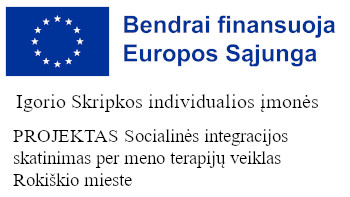Public institution „Savas Rokiškis“ rents audio guides (sound records about the objects of the route in lithuanian, english, russian, german and latvian languages) and sells the maps - leaflets of the route.
 Homestead of Petriošiškis manor house complex.
Homestead of Petriošiškis manor house complex.
The complex is included into the Registry of the Lithuanian Cultural Values. The manor house is privately owned. The landlords are the Tyzenhauz, Przezdziecki and the Putrimas families.
![]() Homestead of Salos manor house.
Homestead of Salos manor house.
A nationally protected esemble of the former manor house homestead of 18th century -the beginning of the 20th century with monumental palace, a church and 7 more appurtenant former buildings of the manor house with a large park. The landlords were the Kęsgaila, the Radziwi††, the Moriconi, the Tyzenhauz and the Przedziecki families.
![]() The fragments of Taranava manor house.
The fragments of Taranava manor house.
The manor house was built in 1858. The homestead of the former manor house together with the park covers 12 hectares. The complex is included into the Registry of the Lithuanian Cultural Values.
The owners of the manor hose were the Kroschinski, the Tyzenhauz and the Weyssenhoff families; Juozas Vėbra, Jonas Vėgėlis.
The Taranava manor house tower in our days. Vitalijus Jocys photography.
![]() Homestead of Gačionys manor house.
Homestead of Gačionys manor house.
The central building is made of wood with the imitation of the forms of classicism, built in the 19th century. After re-ceding the manor house to the baron Antanas Rosenas in 2001, the manor house was renewed. The manor house is privately owned, therefore guests are kindly asked to arrange their visiting time the landlords. The landlord are the Rosen family.
Homestead of Gačionys manor house. Today the manor house is owned privately, but is open to tourist. Audronė Baltuškaitė photography.
![]() Homestead of Bagdoniškis manor house.
Homestead of Bagdoniškis manor house.
A nationally protected complex (the beginning of the 18th- 19th century), wich is comprised of 12 buildings, 11 of which are of the manor house period. The manor house is privately owned, therefore guests are kindly asked to arrange their visiting time with the landlords. The most significant landlords werw the Rudaminas and RÖMER families.
Professor, the rector of university, the creator of Lithuanian law science Mykolas Römeris (1880-1945) with family in the homestead of Bagdoniškis manor house.
Rokiškis museum photography.
![]() Antanašė manor house.
Antanašė manor house.
The complex is included into the Registry of the Lithuanian Cultural Values. The data in the sources can be found since the 18th century. The landlords are the Bilevičius, the Marikonis and the Römer families.
The manor house is privately owned.
Antanašė manor house in painting of Alfredas Römeris (Antanašė, 1861). LMAVB RS, F320-2330/8.
![]() Homestead of Kraštai manor house.
Homestead of Kraštai manor house.
The manor house with a garden and park was built in 1892. The complex has been included into Registry of the Lithuanian Cultural Value. The builder of the manor house is Juozas Tupalskis.
![]() Tyzenhauzai hunting house, Ignotiškis folwark.
Tyzenhauzai hunting house, Ignotiškis folwark.
The new building, which rose on the foundations of the old homestead of the end of the 20th century, does dot remind the former mansion of the beginning of the 19th century, but the place is historic and allows providing some more historical insights about Rokiškis and its owners, the Tyzenhauz family.
![]() Homestead of Onuškis manor house.
Homestead of Onuškis manor house.
The middle of the 19th century. The complex of the manor house is a nationally protected monument. The area of the territory covers 13,58 hectares. 9 buildings from the manor house period had been left. The owners are the Rajecki, the Mleczkow, the Kaminsky, the Komar families.
![]() Homestead of Ilzenbergas manor house.
Homestead of Ilzenbergas manor house.
A nacionally protected complex (1st half of the 19th century - beginning of the 20th century). The manor house is privately owned, were the company „Ilzenbergas“ keeps developing the firs biodynamic farm in the Baltic states. The manor house has set opening hours. The landlords are the Dimša family.
![]() Homestead of Panemunis manor house.
Homestead of Panemunis manor house.
A nationally protected monumental complex of the middle of the 19th century - 1st half of the 20th century with 13 buildings of the manor house period, landscaped gardens with park remains and bodies of water. The landlord were the Massalski, the Giedroyc, the Oziemblowski, the Moriconi and the Krasicki families.
![]() Homestead of Roki6kis manor house complex.
Homestead of Roki6kis manor house complex.
A nationally protected monument of the middle of the 16th century - 1st half of the 20th century. The complex comprises 16 buildings. The landlords were Oscik, the Kroschinski and the Tyzenhauz families.



























 Phone No +370 676 51911
Phone No +370 676 51911 Šaunūs maršrutai. Įspūdingi dvarai ir graži gamta.
Šaunūs maršrutai. Įspūdingi dvarai ir graži gamta.